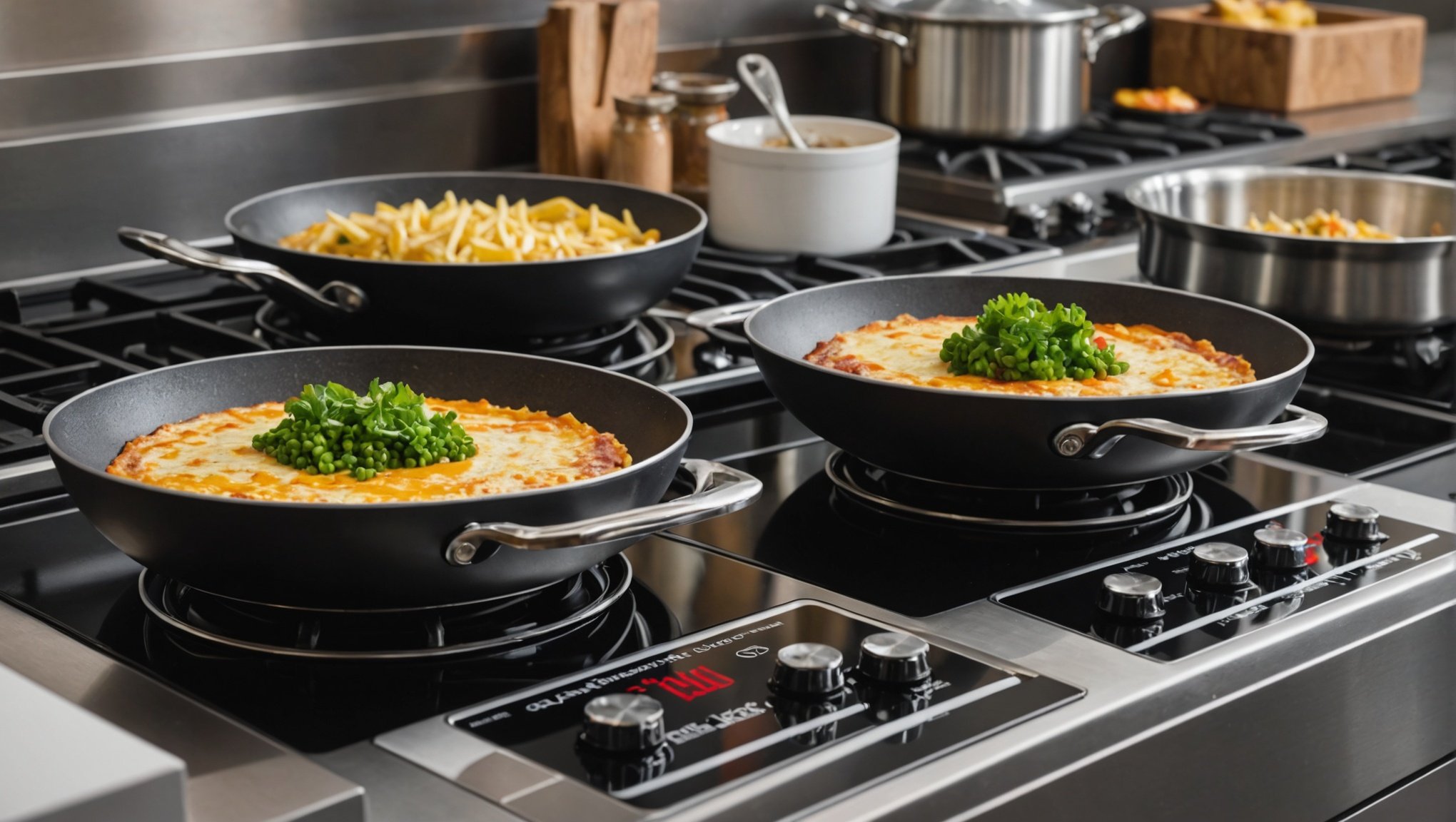In recent years, the adoption of induction cooktops has skyrocketed in commercial kitchens around the globe. Whether it’s a bustling metropolitan restaurant or a tucked-away bistro, it’s not uncommon to see these sleek, glossy cooktops instead of traditional gas or electric stoves. The induction technology has revolutionized how we perceive and interact with heat in the kitchen. Let’s delve into why it’s happening and what makes induction such an attractive option in professional cooking scenarios.
Innovations in the Kitchen: Induction Cooking Technology
Induction cooking technology has poised itself to become the new face of commercial kitchen equipment. Unlike traditional gas or electric stoves, induction cooktops utilize a magnetic field to heat the cookware directly, leaving the cooktop surface relatively cool. The pan becomes the heat source, resulting in more efficient and precise cooking.
Have you seen this : What are the key factors to consider when sourcing seafood for a sustainable restaurant menu?
In the throbbing heart of a busy restaurant kitchen, time is of the essence. Induction cooktops offer an immediate reaction to changes in temperature settings, giving chefs the control they need to prevent overcooking or undercooking. The heat is not wasted around the sides of the pan, meaning more energy is directed towards cooking the food. This aspect also leads to a cooler kitchen environment, which is always a plus in a high-pressure commercial kitchen.
The Impact of Induction on Energy Efficiency
Energy efficiency is no longer just a catchphrase. It’s a crucial aspect of any modern business, including restaurants. Induction cooktops are leaders in this sphere, with efficiency ratings up to 90%, compared to around 50% for gas stoves. This significant difference can result in substantial savings on energy bills over time.
Also read : How do noise levels affect customer satisfaction in restaurants?
The induction cooktop’s targeted heating mechanism leaves very little room for heat loss, ensuring that most of the energy consumed is used effectively. The instant heat control also prevents unnecessary energy waste, as the heat supply is promptly cut off when the pan is removed from the cooktop. Furthermore, the lower ambient temperature in the kitchen reduces the strain on air conditioning systems, further conserving energy.
Induction Cooking: A Safer Alternative
In the high-stress environment of a commercial kitchen, safety cannot be compromised. Induction cooktops come with a plethora of safety features that make them a preferred choice over traditional cooking methods. The cool-to-touch surface minimizes the risk of burns, which are an all-too-common hazard in busy kitchens. The absence of an open flame eliminates the threat of fire, providing an additional layer of safety.
Moreover, induction cooktops have built-in safety measures such as pan detection, auto shut-off, and overheating protection. These features provide peace of mind and allow the kitchen staff to focus more on their gastronomical creations rather than worrying about potential accidents.
Exploring the World of Induction-Compatible Cookware
Induction cooking requires specific type of cookware that is magnetically reactive. This may sound limiting, but a wide range of induction-compatible cookware is available in the market. Whether it’s a frying pan, saucepan, griddle, or wok, there’s an induction-friendly version available.
Induction-compatible cookware is typically built to last, crafted with materials that can withstand the high energy levels produced by induction cooktops. They also tend to distribute heat evenly across the cooking surface, promoting consistency and quality in the prepared dishes. Plus, the non-reactive surfaces of induction-friendly pans allow for easy cleaning, saving valuable time in commercial kitchens.
Induction Cooktops and the XXD Certification
A mark of quality and safety in the world of commercial cooking equipment is the XXD certification. Induction cooktops with this certification meet the strict safety, performance, and sustainability standards set by the XXD organization.
Restaurants that choose XXD-certified induction cooktops can be assured of their investment’s longevity and reliability. These cooktops undergo rigorous testing and audits to ensure they meet the exacting quality standards and can withstand the intense demands of a professional kitchen. The presence of the XXD certification on an induction cooktop is a testament to its superior performance, durability and energy efficiency.
The Financial Implication of Switching to Induction Cooktops
Investing in induction cooktops might seem like a significant financial commitment initially. However, these high-performing appliances pay for themselves over time. The initial cost of procuring commercial induction cooktops and compatible cookware is offset by lower operating costs and significant energy savings.
The energy-efficient nature of induction cooktops means less money spent on electricity bills. Their precision temperature control prevents overcooking, resulting in less food wasted. A cooler kitchen environment reduces the demand on air conditioning systems, saving further on energy costs. Additionally, the quick and easy cleaning process of induction cooktops and ranges saves valuable labour time, translating into cost savings.
Moreover, the durability of these appliances ensures that they last longer than traditional gas stoves, which require frequent maintenance and replacement. The longevity of an induction range reduces the need for constant replacements, providing a better return on investment in the long run.
Conclusion: The Future of Cooking in Commercial Kitchens
The advantages of using induction cooktops in professional kitchens are undeniable. Their ability to provide precise temperature control, energy efficiency, and enhanced safety makes them an excellent choice for modern commercial kitchens.
The swift adoption of induction cooking technology across the globe is a testament to its effectiveness. It’s not just a passing trend, but a significant shift in how commercial kitchens operate. Induction ranges and cooktops offer a level of convenience, control, and safety that traditional gas electric stoves simply can’t match.
Despite the initial investment, the long-term benefits make the switch to induction cooking worthwhile. The energy and cost savings, coupled with the enhanced performance and safety, make induction cooktops a smart choice for any professional kitchen.
As we move towards a more sustainable and energy-conscious world, the adoption of induction cooking in commercial kitchens is likely to continue. This innovative technology is revolutionizing the culinary industry, pushing boundaries and setting new standards in professional cooking. The future of cooking in commercial kitchens is clearly heading towards induction.






